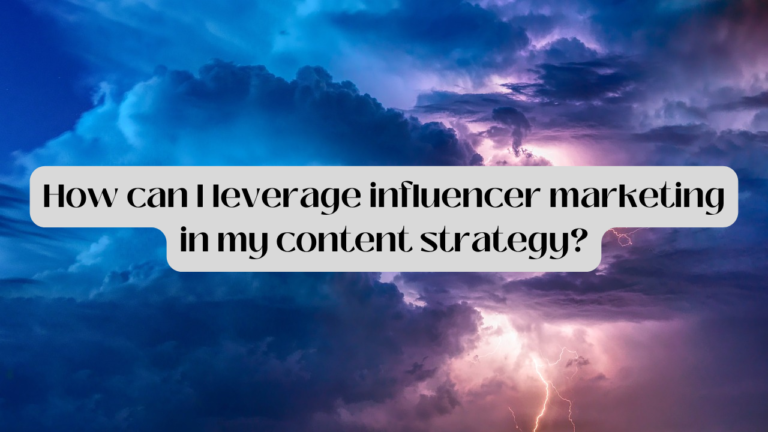Understanding Target Audience for Content Marketing
Content marketing is an essential aspect of modern business promotion and advertising. It involves creating and distributing valuable, relevant, and consistent content to attract and retain a defined audience. However, to be effective, content marketing must target the right audience.
The target audience is the group of people who are most likely to be interested in your product or service. Understanding your target audience is crucial to creating content that resonates with them. This article explores how to identify and understand your target audience for content marketing. You can learn even more about content marketing for your business from Gibson Girls here.
Defining Your Target Audience

To start, you need to define your target audience. The target audience is not a vague group of people but a specific segment of the population that shares common characteristics. These characteristics may include age, gender, income, education, lifestyle, and interests. By defining your target audience, you can create content that speaks to their needs and desires.
To define your target audience, you need to conduct market research. Market research involves collecting and analyzing data about your customers and their behavior. There are several methods of market research, including surveys, focus groups, interviews, and observation.
Surveys are the most common method of market research. You can use online tools such as SurveyMonkey to create and distribute surveys. You can also use social media platforms to conduct surveys. Surveys help you collect data about your customers, such as their age, gender, income, education, and interests.
Focus groups are another method of market research. Focus groups involve bringing together a small group of people who fit your target audience and asking them questions about your product or service. Focus groups allow you to collect qualitative data about your customers’ attitudes and perceptions.
Interviews are another method of market research. Interviews involve one-on-one conversations with customers to gather insights into their behavior. Interviews can be conducted in person, over the phone, or online.
Observation is another method of market research. Observation involves observing customers’ behavior in their natural environment. Observation allows you to collect data about your customers’ behavior, such as how they use your product or service.
Analyzing Your Data
Once you have collected data about your customers, you need to analyze it. Data analysis involves identifying patterns and trends in your data. You can use data analysis tools such as Excel or Google Sheets to analyze your data.
The first step in data analysis is to identify demographic information about your customers, such as their age, gender, income, education, and location. You can use this information to create customer personas, which are fictional representations of your customers. Customer personas help you understand your customers’ needs, desires, and behavior.
The second step in data analysis is to identify psychographic information about your customers, such as their values, beliefs, interests, and lifestyle. Psychographic information helps you understand your customers’ motivations and preferences. You can use this information to create content that resonates with your customers.
The third step in data analysis is to identify behavioral information about your customers, such as their buying behavior, product usage, and engagement with your brand. Behavioral information helps you understand your customers’ actions and decision-making process. You can use this information to create content that addresses your customers’ pain points and helps them achieve their goals.
Creating Content for Your Target Audience
Once you have defined and analyzed your target audience, you need to create content that speaks to their needs and desires. There are several types of content you can create, including blog posts, social media posts, videos, podcasts, infographics, and whitepapers.
Blog posts are a popular form of content marketing. Blog posts help you establish your brand as an authority in your industry and provide value to your customers. You can create blog posts on topics related to your product or service and share them on your website and social media platforms.
Social media posts are another form of content marketing. Social media posts are short, snackable pieces of content that are easy to consume and share. You can create social media posts on various platforms such as Facebook, Instagram, Twitter, and LinkedIn. Social media posts can be in the form of images, videos, or text updates.
Videos are another popular form of content marketing. Videos allow you to tell a story and engage your audience visually. You can create videos on various platforms such as YouTube, Instagram, and Facebook. Videos can be in the form of how-to tutorials, product demos, or behind-the-scenes glimpses of your brand.
Podcasts are an emerging form of content marketing. Podcasts allow you to share your expertise and connect with your audience on a personal level. You can create podcasts on platforms such as Apple Podcasts, Spotify, and Google Podcasts. Podcasts can be in the form of interviews, panel discussions, or solo shows.
Infographics are a visual way to present complex information. Infographics allow you to simplify data and present it in a visually appealing way. You can create infographics on platforms such as Canva or Piktochart.
Whitepapers are in-depth reports that provide insights into your industry. Whitepapers help you establish your brand as a thought leader in your industry. You can create whitepapers on topics related to your product or service and share them on your website.
Distributing Your Content
Once you have created content for your target audience, you need to distribute it. There are several ways to distribute your content, including email marketing, social media, paid advertising, and influencer marketing.
Email marketing involves sending newsletters or promotional emails to your subscribers. Email marketing helps you stay in touch with your customers and keep them informed about your brand.
Social media is a powerful way to distribute your content. Social media platforms allow you to share your content with a large audience and engage with your customers. You can use social media platforms such as Facebook, Instagram, Twitter, and LinkedIn to distribute your content.
Paid advertising is another way to distribute your content. Paid advertising allows you to reach a wider audience and drive traffic to your website. You can use platforms such as Google Ads, Facebook Ads, and Instagram Ads to run paid advertising campaigns.
Influencer marketing is a form of marketing that involves partnering with influencers to promote your product or service. Influencer marketing helps you reach a new audience and build credibility for your brand. You can use platforms such as Instagram and YouTube to find influencers who fit your brand.
Understanding your target audience is crucial to creating effective content marketing. By defining your target audience, analyzing your data, and creating content that speaks to their needs and desires, you can establish your brand as an authority in your industry and build a loyal customer base. Remember to distribute your content through various channels to reach a wider audience and drive traffic to your website.





